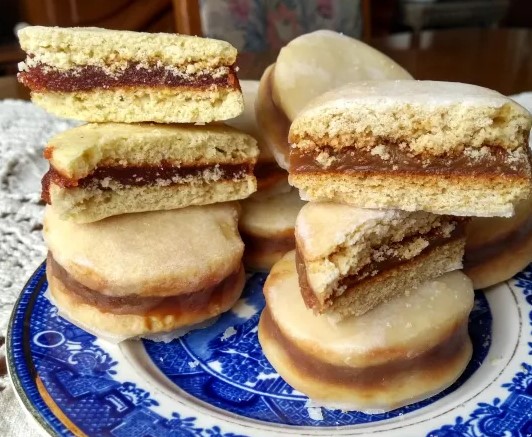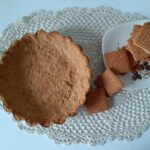Alfajores are the favorite candy of Argentines, so much so that you can find numerous variants to satisfy all tastes. Although most of the provinces have their characteristic alfajor, the most popular are those of Córdoba, Santa Fe and Mar del Plata. On this occasion, you should know that the Cordoba artisanal alfajores are small, covered by a thin layer of glaze and, traditionally, they are filled with fruit sweets and, of course, dulce de leche.
In this article we teach you how to make Cordovan alfajores, original recipe. Exquisite to give as gifts or to have on hand when you want to savor something sweet!
Ingredients to make Cordovan Alfajores:
- For the caps
- 160 grams of flour 0000
- 50 grams of sugar (¼ cup)
- 1 egg
- 40 grams of ointment butter
- 1 tablespoon of honey
- 1 dessert spoon of baking powder
- ¼ teaspoon bicarbonate of soda
- 1 pinch of salt
- grated lemon peel
- For the filling
- 150 grams of dulce de leche and/or quince jelly
- For the glaze
- 100 grams of icing sugar
- 25 cc of lukewarm water or lemon juice
How to make Cordovan Alfajores:
- To start with the Cordoba alfajores recipe, first sift the flour into a container and mix it with the baking powder, the baking soda and a pinch of salt.
- In another bowl, beat the ointment butter along with the sugar.
- When the ingredients have come together, add the egg, honey, and lemon zest. Integrate with a hand mixer or spatula.
- Tip: if the mixture takes on a consistency as if it had been cut, don’t worry. When you incorporate it with the flour, it will have been solved.
- Make a crown on the counter with the flour and the rest of the dry ingredients that we integrated in the first step. Next, place the liquid smoothie in the center.
- Start joining without kneading. You can help yourself with a cornet or spatula to manipulate the dough as little as possible.
- Trick: it is important that you do not knead, because if gluten develops, the lids can be rubbery.
- Place the dough obtained on plastic wrap or separators and stretch it with a rolling pin until it is approximately 4 mm thick.
- Then, place it on a plate and take it to the fridge for at least 30 minutes or until it’s quite hard.
- When the dough has cooled, remove it from the fridge and cut the discs with a circular cutter5 cm in diameter.
- On top place the excess cuts and stretch again to continue cutting discs, taking advantage of the dough as much as you can (remember not to knead).
- If the dough is no longer cold, let it rest again in the fridge before continuing to cut.
- Trick: with these quantities you will obtain approximately 28 tapas with which you will make 14 alfajores.
- Place the discs on a plate with silicone or parchment paper. Then, take them to the preheated oven at a moderate temperature, 180 ° C for about 6 minutes. They should be white on top and slightly golden on the bottom.
- Remove the roast from the oven and place the caps on a wire rack to cool.
- If you choose to fill the alfajores with quince jelly, first place the sweet in a container and mash it with a fork to soften it, so it will take on a creamier consistency.
- Place the sweet on one of the lids and place another on top, press gently.
- Then, smooth the edges with a little more candy and with the help of a spatula so that they are neat and covered.
- Trick: to fill you can use the spatula or put the sweet in a sleeve with a smooth spout.
- It is always convenient to smooth the edges with the sweet and spatula so that the glaze runs better and does not stay in the central groove.
- To prepare the glaze that will cover the alfajores, place the powdered sugar in a bowl and gradually add the warm(not boiling) water or lemon juice until the desired consistency is obtained.
- You should know that the consistency is important that it be fluid, but thick.
- Trick: remember that you should always place the liquid on top of the sugar and not the other way around, mixing well before adding more.
- You should know that sugar absorbs a lot of water and the paste will form quickly.
- When the glaze is ready, dip the alfajores from Córdoba one by one into the same glaze.
- You must do it with the help of two forks to be able to turn them, making sure that they are completely covered.
- Lift the alfajor with the fork and let the excess glaze drain off. Next, rest it on a silicone paper or grid until it dries.
- Drying time may vary depending on the weather, but approximately takes about 8 hours.
- Trick: every so often move them around a little with the help of a spatula so they don’t stick to the base.
- Now you can enjoy these classic Cordovan stuffed alfajores.



